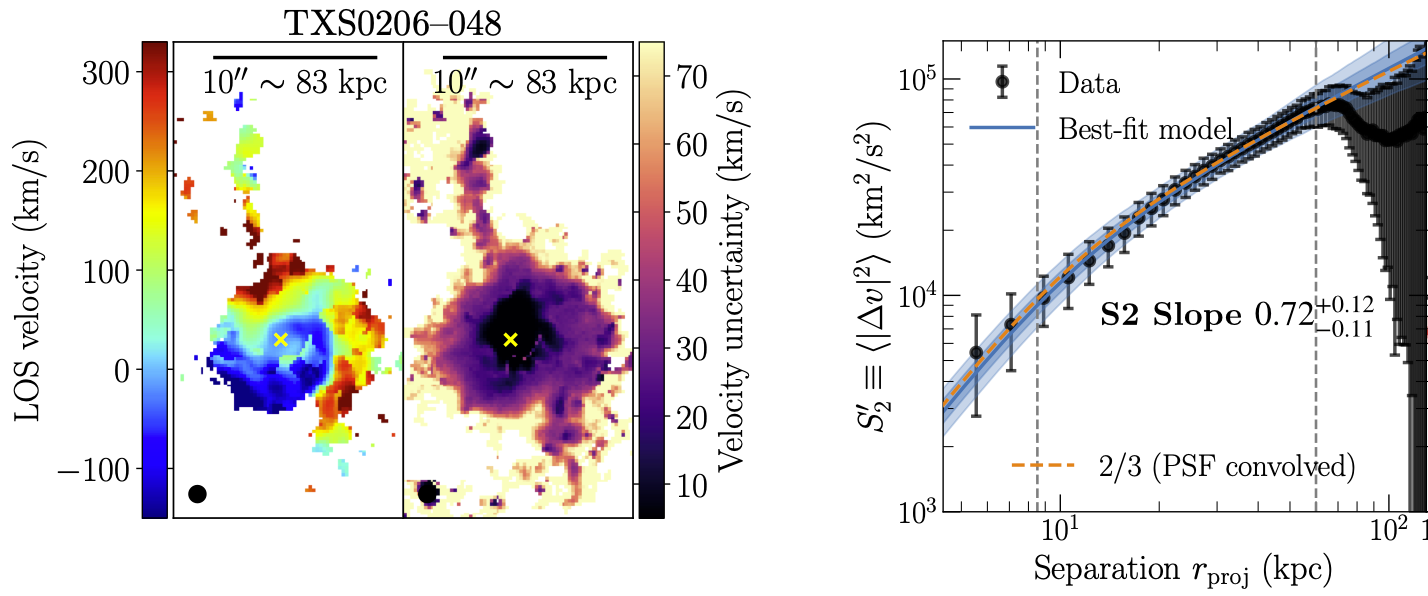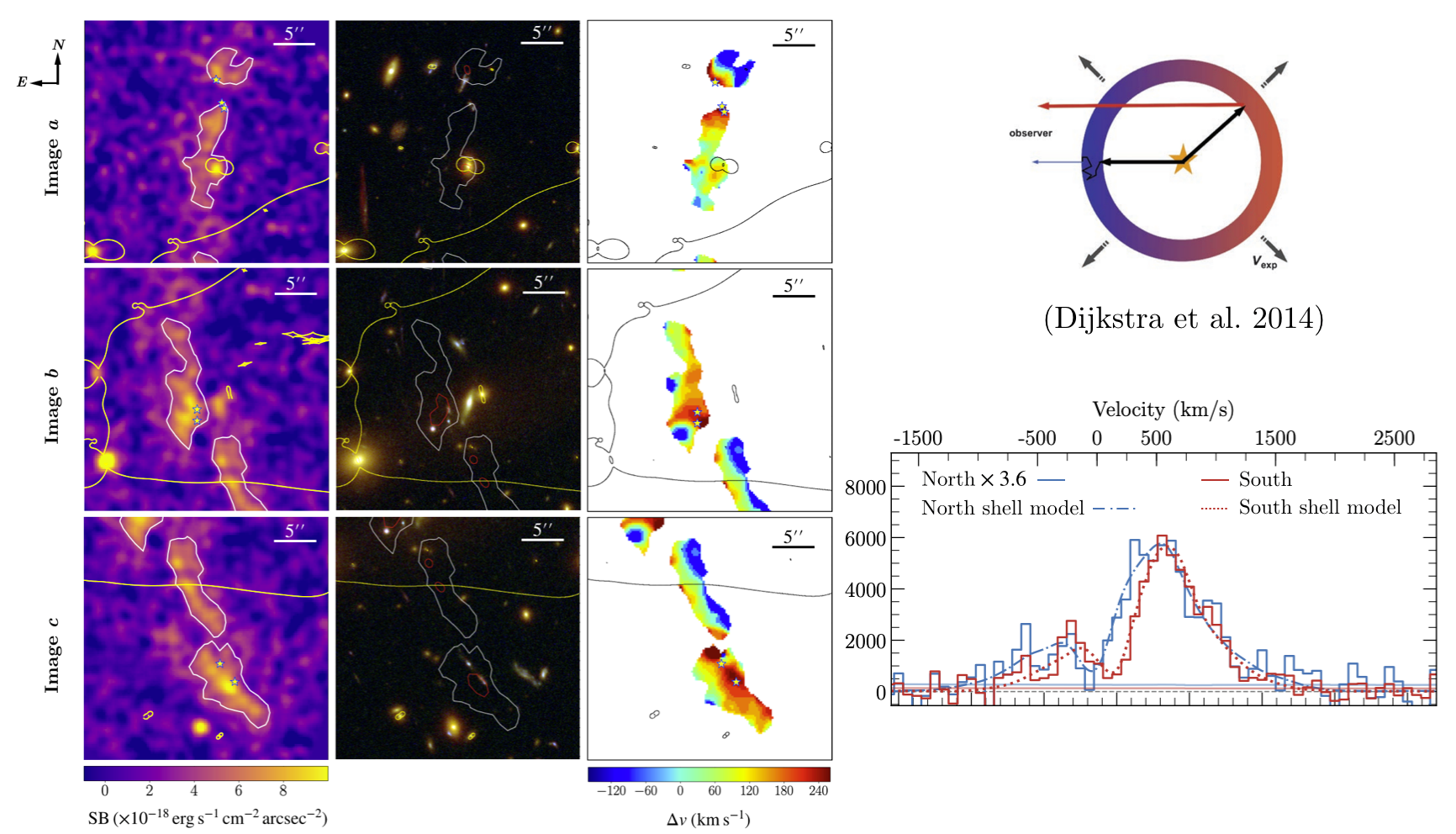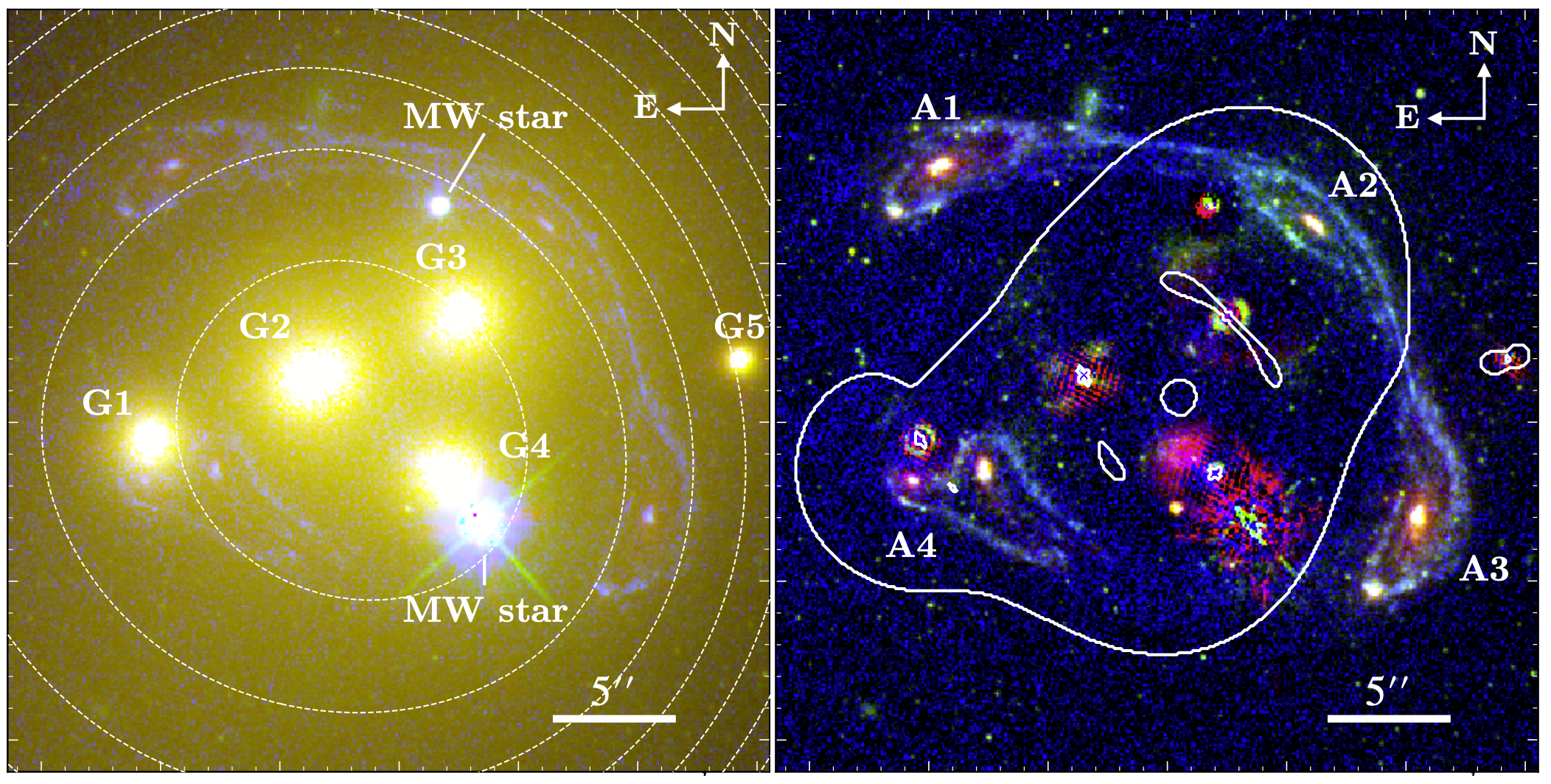Chen et al. 2024, ApJ.

Starting Sept 2024, I will be a joint Caltech-Carnegie Brinson Fellow at California Institute of Technology & Carnegie Observatories.
The background here is a photo I took in an observing trip to Chile, showing the Magellan 6.5-m telescopes at the Las Campanas Observatory.
(This site was last updated on Feb 23, 2024.)
My research focuses on observations of the diffuse circumgalactic medium (CGM) -- the outermost envelopes of galaxies. I seek to better understand the dynamical state of the CGM, and its connection to the star-formation/AGN activities of galaxies and the cosmic baryon cycle in general. My work heavily relies on data obtained by wide-field, integral-field spectrographs (e.g., VLT/MUSE), together with photometric and spectroscopic data from several different telescopes such as the Hubble Space Telescope and the Magellan Telescopes. I also have extensive experience in lens modeling of strong gravitational lensing clusters, with both parametric and free-form methods. My PhD advisor is Prof. Hsiao-Wen Chen.
You can find me on Google Scholar and LinkedIn.
Below you can find a list of my recent 1st-author papers. For a complete list of my publications, please check out the SAO/NASA ADS.





I've tremendously enjoyed working with IFU data, and am always happy to chat about data reduction/analyses, line feature fittings, machine learning/AI, strong lensing, and any combination/synergy of these topics.
*The Ohio State University; CCAPP Seminar, Nov. 2023
Arizona State University; Oases in the Cosmic Desert, Feb. 2023
University of Milano-Bicocca, Italy; What matter(s) around galaxies, Sept. 2022
*University Observatory (USM) of LMU Munich, Germany; Seminar, Jul. 2021
*University of Michigan; Astronomy Seminar, Feb. 2021
*Carnegie Observatories; Tea Talk, Dec. 2020
*The Chinese University of Hong Kong, Hong Kong; Workshop on Cosmology, Jan. 2018
University of the Basque Country, Spain; Cosmology Seminar, Oct. 2017
University of Michigan; Astronomy Seminar, Jul. 2017
*Hong Kong University of Science and Technology, Hong Kong; Gravitational Cosmology Workshop, Jan. 2017
Leiden University, Netherlands; Celebrating a Century of Gravitational Lensing, Jul. 2016
I grew up in Guizhou province in southwest China, a place relatively underdeveloped in terms of economics and education, but with gorgeous mountainous landscapes and rich cultural heritage from multiple ethnic minorities. I studied at the University of Hong Kong (HKU) and graduated with a B.Sc. in physics and an M.Phil. in astronomy. Growing up with little access to quality education, I feel extremely grateful for the chains of lucky events and good mentors that allowed me to reach beyond my limitations. My experiences of living in mainland China, Hong Kong, and the US made me appreciate the value of diversity and inclusion, which can only be built upon a foundation of empathy and everyone's willingness to always approach the unknowns with an open mind. And an open mind, as I’ve learned the hard way over and over again in the years of struggling with my own belongingness and identity, is one of the greatest gifts we can give ourselves and another person.
I once wanted to be a clinical psychologist and was working towards a master's degree in psychology, but decided to drop out halfway to go back to pursuing graduate studies in astrophysics. Although becoming a frontier mental health professional is not my career priority right now, mental health awareness remains one of the issues close and dear to my heart.
mandychen@astro.uchicago.edu
GitHub: github.com/mandychen-astro
LinkedIn: linkedin.com/in/cuncheng-mandy-chen
Department of Astronomy and Astrophysics
The University of Chicago
William Eckhardt Research Center, room 526
5640 South Ellis Avenue
Chicago, Illinois 60637